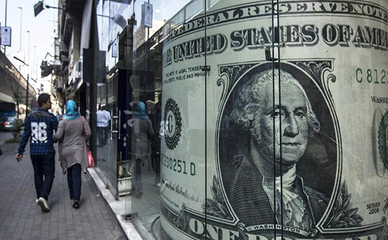
Bank of America's profits shrank in the first quarter, and it had to allocate more funds to cope with deteriorating consumer non-performing loans. This resulted in the bank's stock price falling by more than 3% on the 16th. Although loan institutions in the United States have been using flexible household financial conditions as evidence to prove that the economic foundation is still stable, the problem of low-income consumers is beginning to emerge.
Firstly, the issue of credit card arrears is becoming increasingly prominent. The net write off amount of Bank of America, which is unlikely to be recovered, increased from $807 million in the same period last year to $1.5 billion in the first quarter, mainly due to credit card losses. Michael Ashley Schulman, Chief Investment Officer of Running Point, based in California, said, "The main economic issue facing Bank of America and most other banks is that the Federal Reserve's interest rates may not fall as quickly as previously expected. As a result, they may see an increase in consumer and corporate defaults, especially in the real estate sector. A good quarter for banks will not alleviate these macro concerns."
Secondly, the commercial real estate crisis has exacerbated this issue. Bank of America provided $1.3 billion for credit losses in the first quarter, up from $931 million in the same period last year. It also made more write downs on office loans, which to some extent increased its loan losses in the business sector. However, the bank's CFO stated that the bank has limited commercial real estate risk and is currently reviewing ratings, property evaluations, and sales. This quarter, the revenue of Bank of America's consumer division decreased by 5% to $10 billion, mainly due to a decrease in deposit balances. In addition, Bank of America also charged $700 million in this quarter's report to supplement the government deposit insurance fund, which has exhausted $16 billion to cover depositor losses caused by the bankruptcies of two banks in 2023.
In addition, with the increase in financing costs, Bank of America's net interest income continued to decline, decreasing by $400 million to $14.19 billion, a year-on-year decrease of 3%, which became the main reason for the significant decline in Bank of America's profits this quarter. According to departmental analysis, the revenue of the Consumer Banking business unit in the first quarter was 10.166 billion US dollars; The global wealth and investment management department's revenue was $5.59 billion, a year-on-year increase of 5%, achieving growth for 21 consecutive quarters; The revenue of the global banking and marketing departments was $5.98 billion and $5.88 billion respectively, while investment banking expenses increased by 35% year-on-year to $1.6 billion. At the business level, FICC's revenue (fixed income, foreign exchange, and commodities) decreased by 6% year-on-year to $3.2 billion, mainly due to the impact of the macro product trading environment, but the improvement in mortgage loan transactions partially offset this impact; The revenue from investment banking exceeded expectations, increasing by 35% to $1.57 billion, with an expected $1.36 billion.
Although, according to LSEG's data, excluding one-time items, Bank of America's first quarter earnings per share were 83 cents, higher than analysts' average expectations of 76 cents per share. However, banking executives have stated that predicting future profits has become more difficult due to the shift in expectations of US interest rate cuts and uncertainty in the economic outlook. If the Federal Reserve maintains interest rates at a high level in the coming months, banks that have made substantial profits from rising interest rates in the past two years may further expand their earnings, but if potential economic slowdown prevents borrowers from taking out loans, their income may decrease.
Overall, although Bank of America's performance reports for this quarter mostly exceeded expectations, the significant losses in commercial real estate and credit card risk exposure seem to be only a matter of time.

According to Bloomberg, a recent in-depth interview with Michael Dehal, senior portfolio manager at Raymond James' Dehal Investment Partnership, was released, focusing on the economic development prospects and potential risks of Canada and the United States in 2026.
According to Bloomberg, a recent in-depth interview with Mi…
TikTok Shop, the global e-commerce platform under ByteDance…
As a severe flu outbreak sweeps across the United States, w…
Recently, US Treasury Secretary Mnuchin publicly stated tha…
At the dawn of 2026, the United States launched a military …
From the stiff step when it first debuted in 2022 to demons…